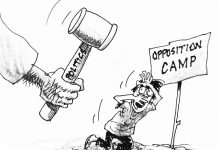Global business increasingly relies on strategic outsourcing. From software to marketing, vendors provide cost-effective access to specialized skills and expertise, boosting efficiency and competitiveness in today’s interconnected marketplace. However, this reliance also introduces a significant risk: encountering subpar work that can jeopardize deadlines, budgets, and even the reputation of your company. This article explores the common causes of this issue and outlines a strategic approach to address and mitigate the damage.
Identifying the Root Causes
Subpar vendor work can stem from several sources. Poor communication and unclear expectations often lead to problems. Ambiguous contracts, poorly defined deliverables, and insufficient feedback loops can leave vendors unsure of what’s expected, resulting in work that misses the mark. This is often compounded by inadequate project management on both sides. Without clear milestones, regular progress checks, and proactive communication, problems can fester unnoticed until it’s too late to rectify them effectively.
Another major factor is the vendor’s internal capabilities. While a vendor might boast impressive credentials, their actual capacity and expertise may fall short. This could be due to a lack of skilled personnel, inadequate resources, or a failure to properly allocate resources to your project. Overpromising and underdelivering is a common tactic used to secure contracts, leaving clients with substandard results. Finally, unforeseen circumstances, such as internal restructuring or unexpected technical challenges within the vendor’s organization, can also contribute to subpar performance.
Addressing the Issue: A Proactive Approach
When faced with subpar work, a reactive approach often exacerbates the problem. Instead, a proactive and strategic response is crucial. The first step is to document the deficiencies thoroughly. This involves compiling concrete evidence, such as screenshots, test results, or specific examples of unmet requirements. This documentation will be essential in subsequent discussions with the vendor and potentially in legal proceedings if necessary.
Once the issues are documented, initiate a direct and professional conversation with the vendor’s project manager or point of contact. Clearly articulate the specific problems, referencing the documented evidence. Maintain a calm and professional tone, focusing on solutions rather than blame. The goal is to collaboratively identify the root causes of the problem and agree on a plan for remediation. This might involve revisions, additional work, or even a partial or full refund, depending on the severity of the issues.
Negotiating a Resolution
Successful conflict resolution necessitates a delicate balance: assertive yet collaborative. Clear communication, mutual respect, and a willingness to compromise are essential for achieving a mutually beneficial outcome. Clearly state your expectations for rectification, outlining specific timelines and deliverables. Be prepared to compromise, but don’t settle for anything less than acceptable quality. Persistent vendor unresponsiveness or lack of cooperation necessitates escalation. Attempting to resolve the issue directly with the vendor’s management is a crucial next step. Clearly articulate the problem, the attempts made to resolve it, and the desired outcome. This formal escalation often prompts a more decisive and timely response, protecting your interests and ensuring the project remains on track. Document all communications throughout this process. This might involve contacting the account manager or even the CEO, depending on the vendor’s structure and the severity of the situation.
Mitigating Future Risks
Preventing future instances of subpar vendor work requires a proactive approach to vendor selection and project management. Rigorous vetting of potential vendors is crucial. Thorough due diligence, including background checks and reference reviews, mitigates risks and ensures a successful partnership. This includes verifying their credentials, reviewing client testimonials, and requesting references. Clearly defined contracts are crucial, outlining specific deliverables, timelines, payment terms, and dispute resolution mechanisms. Regular communication and progress checks throughout the project lifecycle are essential to identify and address potential problems early on. Finally, building strong relationships with vendors fosters trust and collaboration, making it easier to resolve issues should they arise.
In conclusion, encountering subpar work from a vendor is a frustrating but not insurmountable challenge. By adopting a proactive and strategic approach, focusing on clear communication, thorough documentation, and collaborative problem-solving, businesses can navigate these difficult situations effectively and mitigate future risks. The key is to prioritize clear expectations, robust project management, and a commitment to achieving high-quality results.
————–
If you have any questions or would like to share your thoughts on the column, feel free to send an email to jca.bblueprint@gmail.com. Looking forward to connecting with you!




